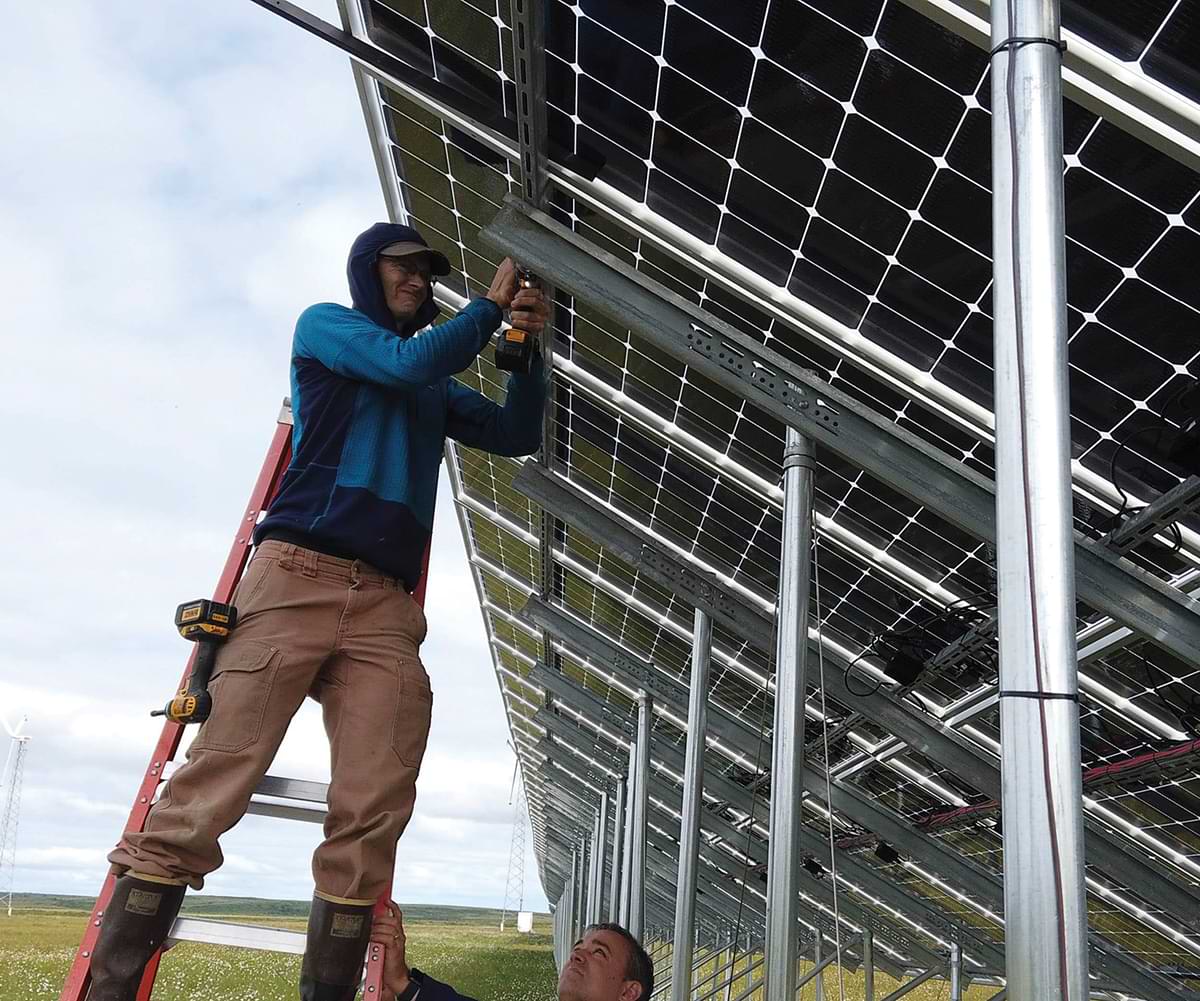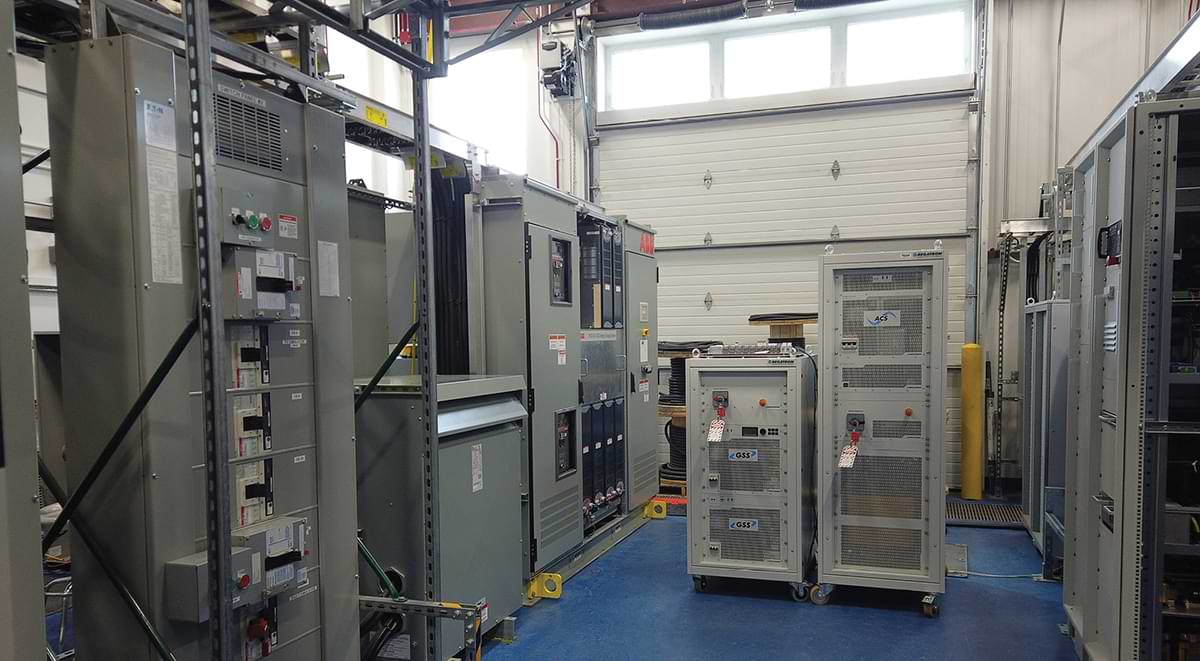Big Idea on Campus
Sustainability research and practice at Alaska’s universities
By Rachael Kvapil
eave a place better than you found it: the Campground Rule is well known and practiced by anyone who roams the outdoors responsibly. Given that the Latin word for camp is the root of the English “campus,” higher education has assimilated the same ethos.
The three main campuses of the University of Alaska system each have an Office of Sustainability to coordinate efforts to reduce the impact of the institution on the environment and to conserve resources for future generations.
At UAA, the most visible program is gathering, sorting, and processing recyclable paper, cardboard, plastics, glass, aluminum, and even vegetable waste from student food services. The office calls recycling a “gateway to sustainability.” Other initiatives include testing the efficiency of light fixtures, landscaping with site-appropriate plants to minimize maintenance inputs, and replacing disposable eating utensils with reusable tableware at the dining commons.
At UAS, three buildings at the Juneau campus are heated with air source heat pumps. Also, given the high rate of electric vehicle adoption in the capital city thanks to its abundant hydropower, the university hosts two charging ports.
For UAF, students are leading sustainability. In April 2009, the Associated Students of the University of Alaska Fairbanks (ASUAF) approved a $20 per semester Students Initiative for Renewable Energy Now fee. They later shortened the name to the Student Sustainability Fee for clarity, and a student sustainability board formed to ensure student control of the fees collected. For five years, the Office of Sustainability funded more than fifty student-led sustainability programs and projects in the areas of energy, waste reduction and recycling, transportation, food, and education. As the budget landscape changed, steps were taken to restructure the program, and ASUAF voted to make the sustainability fee permanent.
The Office of Sustainability’s main mission is to make UAF a model for the Circumpolar North and beyond by incorporating sustainability into curriculum, operations, campus life, and the greater community. In 2014, the UAF Sustainability Plan outlined ways to develop sustainable practices across campus, and UAF Sustainability Coordinator Christi Kemper says at least half of that plan was implemented.
“Early on, we funded a variety of sustainability projects, including energy projects,” says Kemper. “Now our focus is on a handful of student-run programs that advocate waste prevention and education.”

Amanda Byrd
There are six main programs overseen by the UAF Office of Sustainability. The recycling program employs students to conduct bin pickups around campus, including the dormitories. A team of students collect paper, aluminum, #1 and #2 plastics, and other items for transportation to the Fairbanks North Star Borough Central Recycling Facility.
The Green Bikes Program offers students a more affordable and sustainable source of transportation. Students are offered discounts for long-term rentals of commuter bikes, tandem bikes, and fat-tire bikes capable of handling winter snow and ice.
The Nanook Grown program provides gardening education to students each summer from peer mentors that work under the guidance of a horticulture professional. Students gain access to fresh produce through this program, and excess food is used at a weekly market table near the UAF Wood Center or donated to programs that feed community members experiencing food insecurity. The program also offers events like zero-waste cooking workshops and farm-to-table dinners.
The Food Pantry program assists students on campus experiencing food insecurity by providing one bag of food per week filled with canned items and shelf-stable foods along with other hygiene products.
The Free Store Program is a central, organized location for the campus community to drop off unwanted items or pick up something without an additional charge. Working under the motto “Take what you need and leave what you don’t!” the goal is to reduce waste, save usable items from landfills, and get items to those who can use them.
Along these same lines, the Upcycle Annex program is a student-run repair café where people can fix items rather than throw them away. Tools and supplies are provided to students along with the help of volunteers to restore things ranging from household appliances and mechanical devices to computers, bicycles, clothing, and more.
In addition to their main programs, Kemper says the Office of Sustainability works with students to develop interdisciplinary internships that incorporate sustainability practices. She says that more businesses are looking for employees who have sustainability skills, whether it’s developing a zero-waste system or finding ways to better use resources on hand. Likewise, she says students are more aware of climate change and are looking for ways to make realistic lifestyle changes to counteract the problem.
Chris Pike, a research engineer at ACEP, will be the first to admit there is no magic bullet when it comes to offsetting fossil fuels. Sustainable systems that work well in one region of the state are difficult to implement in another. For instance, Juneau’s coastal environment allows the community to produce nearly all its electricity using hydropower while Interior locations near Healy and Delta Junction are more suitable for wind projects. Pike’s specialty is solar energy.
“What we’re looking at is different than a solar research institute like Arizona State University. Our focus is on cold region and high latitudes,” he says.
ACEP started solar data collection in 2012 when it produced a report on solar thermal systems in the Arctic. In 2017, ACEP published an Alaska solar technology review paper followed by the creation of the Solar Technologies Program, the publication of “A Solar Design Manual for Alaska,” and the construction of the UAF solar test site. Pike says much of this information came from tracking existing solar energy systems. The Solar Technologies Program also conducts field-deployable irradiance measurements, site feasibility assessments, and performance and cost analysis.
Part of the program’s mission is to make sure people have realistic expectations of solar technologies. In Alaska, solar technologies are great in the spring and summer months but less so in the winter. Currently, there aren’t any feasible long-term storage options that allow people to harvest solar energy in the summer for winter use.
“This means solar panels aren’t generating solar energy during the darkest, coldest parts of the year when we need additional electricity to light and heat our homes,” says Pike. “Researchers are focusing on viable storage methods and have a few possibilities, but nothing that would work in this situation.”
He adds that snow covering solar panels also presents a challenge during the winter.
As the price of solar technologies has decreased, Pike says more people have installed systems. He estimates that most rooftop solar technologies have a ten-year return on investment. As a mature technology, there is already an established process for installing and successfully operating solar technologies. However, Pike reminds existing and potential users that solar alone won’t completely offset fossil fuels.
“It’s going to take a combination of all the sustainable energies working together,” says Pike. “It might be that you use solar in spring and summer and wind in the winter to create consistent energy.”
Amanda Byrd

ACEP is exploring all those alternatives. Jeremy Kasper, ACEP director, says the main mission of the program is to develop and disseminate robust, cost-effective, resilient, and innovative energy solutions for Alaska and beyond by integrating renewable energy resources with existing traditional energy systems.
“Beyond our mission and vision, ACEP is focused on lowering the cost of energy throughout Alaska and developing economic opportunities for the state, its residents, and its industries,” says Kasper.
UAF founded ACEP in 2008. Over the past fifteen years, it has provided resources across a broad spectrum. In the education sector, ACEP works with and supports programs such as Teaching Through Technology, which is a “train the trainers” organization that works primarily with high school teachers. They also provide undergraduate education and internships as well as postgraduate and professional education.
Within the realm of research, ACEP has four primary programs that focus on the responsible advancement of marine renewable energy; promote commerce and partnerships between Alaska and other Arctic and Pacific regions; optimize diesel-renewable hybrid energy systems for islanded electric microgrids to bring renewable energy options to small communities; and increase understanding of the Alaska solar resource, identifying new technologies and novel configurations that can improve energy outputs and ease integration concerns.
ACEP also manages several facilities focused on testing energy systems, including the Energy Technology Facility, the Tanana River Hydrokinetic Test Site, and the Solar PV Test Site. Kasper says that the lessons learned through the research and testing process can benefit communities on a global scale.
“If you can successfully implement a system in rural Alaska, you can probably implement it just about anywhere,” says Kasper.
According to Kasper, the three metrics that ACEP prioritizes for any energy system it studies are reliability, resiliency, and economics. He says reliability and resiliency are key in Alaska, as extreme climates require an energy system that doesn’t fail or can be restored quickly. Likewise, high cost of living, in which a large percentage is allocated to energy costs, inhibits economic activity and the adaptation of alternative energy systems.
Kasper says, “By limiting and ideally lowering these costs, we can directly stimulate economic and/or subsistence activity, which increases the viability and sustainability of life in Alaska.”